Case Studies
A set of Case Studies has been prepared to illustrate how ITS is used in practice. The sites have been selected to provide diversity in environment, operator type, scale, ITS implemented, and degree of experience with ITS.
The Case Studies are presented in three clusters:
Sites where ITS is well established
Sites where ITS is currently in first deployment
Sites which are considering the use of ITS and/or carrying out some initial testing
This section provides an overview of the ten Case Studies. It presents the main points of context, ITS implemented, and lessons learned (for the sites where the ITS has been deployed).
Each Case Study is presented in detail on the Toolkit website. The information includes:
-
Contextual information: Regulatory environment, operator information, basis of service organization and procurement, basis of financial support
-
ITS: Overall ITS approach, individual ITS systems implemented, technical details, means of operations management
-
Implementation experience: Preparation, procurement, installation and implementation, post-implementation experience, lessons learned, benefits achieved.
It is strongly recommended that decision-takers and practitioners familiarize themselves with these Case Studies and with other sites that have implemented ITS. There is a vast array of experience which can be drawn on – not all of it pleasant, but all of it valuable. It is clear that the implementers are willing to share what they have learned with their counterparts in other cities and regions.
-
Zurich
VBZ, Zurich, Switzerland
-
Public transport in Zurich is provided by VBZ, a multi-modal operator of trams, trolleybuses and buses. Trams form the backbone of the system.
-
Since the mid-1970’s, the City of Zurich has committed to a strongly pro-public transport policy, giving it high priority in streets and at junctions

-
The basic concept is that the City provides an excellent operating environment, and VBZ should operate on-time services within that frame
-
ITS is central to Operations Management and high-quality, on-time services. VBZ first implemented ITS in the early-1970’s.
-
The ITS is integral to the VBZ operation, and to the organization, business processes, operating procedures, data, and management. The approach has matured over the four decades as they gain better understanding of what they can do, embed it in the organization, and evolve the technology.
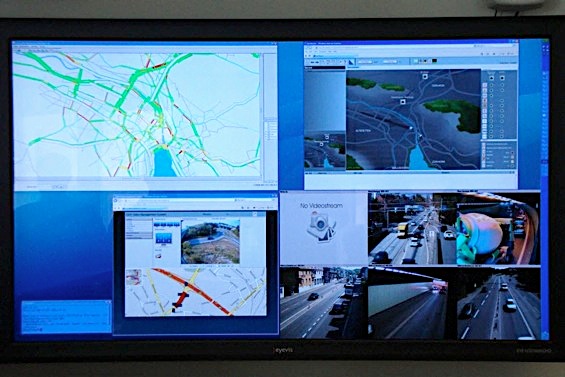
-
VBZ has evolved from using ITS to just know where their vehicles are, to precision operation with on-time running and transfer assurance
-
Passenger information is extremely well-developed, prior to the trip, at stops and in the vehicles. It provides a seamless and ubiquitous guidance.
-
-
Florence
ATAF, Florence, Italy
-
ATAF is the Municipality-owned bus operator of the City of Florence, serving the Metropolitan Area and some hinterlands towns.
-
Since 2005, services are provided under Service Contract to the Province of Florence, for which ATAF joined with Li-nea and some smaller operators in a special purpose entity.
-
The Contract has quantitative and qualitative performance requirements, in particular in relation to volume of service and punctuality. It also places quite extensive service and event reporting requirements.
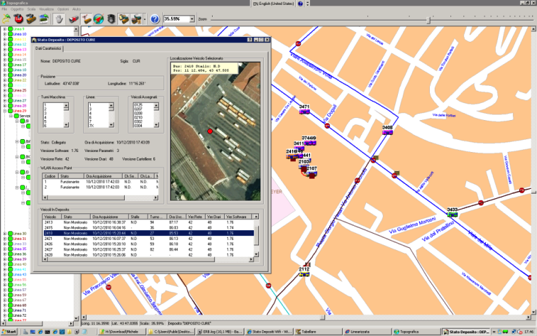
-
ATAF first introduced AVLC in 1984 to about 100 of its buses. The AVLC was updated in 1996 and extended to the full fleet of about 400 buses. This included GPS, trunked mobile radio, and enhanced AVLC functions.
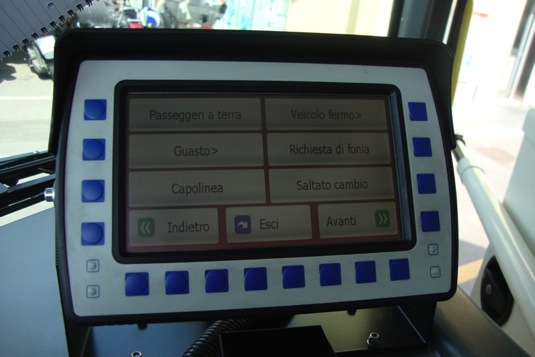
-
A new procurement was launched in 2006 for a total AVLC replacement, at-stop RTPI units, and internet/mobile travel information applications. It also procured a limited amount of video-surveillance and traffic signal priority facilities, which may be extended later.
-
Phased deployment has commenced in 2009 with the new AVLC Control Centre already fully operational. It contains a major functionality upgrade.
-
-
Dublin
Dublin Bus, Dublin, Ireland
-
Dublin Bus is the publicly owned operator of the bus network in Dublin. It operates 980 double-deck buses in the city and hinterland of Dublin.

-
Dublin Bus has a 5-year Public Service Obligation contract with the National Transport Authority. Performance measures are now linked to PSO payments, and will place increasing pressure on operational quality.
-
The company has implemented extensive ITS over the course of two decades. Electronic Ticket Machines were first implemented in 1989 and have provided the backbone of the on-bus intelligent network.
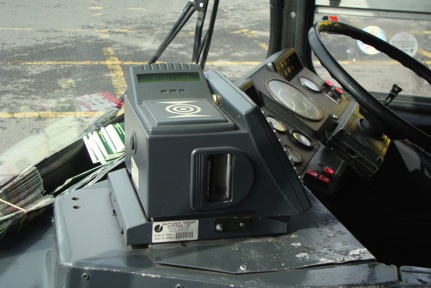
-
Vehicle location and voice/data communication capability have been added to provide the platform for a new AVLC system. This is based on a centralized Control Centre that manages services on a real-time basis.
-
The AVLC supports real-time passenger information on internet and at bus-stops. The RTPI server and at-stop displays are managed by the city.
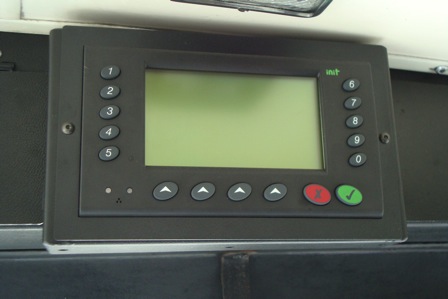
-
The ITS has been based on the business and operational requirements.
-
The AVLC is in its first full year of operation, and has not yielded quantified resource or operational benefits
-
-
Izmir
ESHOT, Izmir, Turkey
-
ESHOT is the municipal-owned operator of the bus network in Izmir and its surrounding service area. It operates a fleet of 1,560 buses, including 410 from its associate Izulas.
-
The bus network forms part of an integrated transport system including Metro, Rail, Ferry, and local paratransit. Integration has been developed since 2000, and suburban rail was included in 2010.
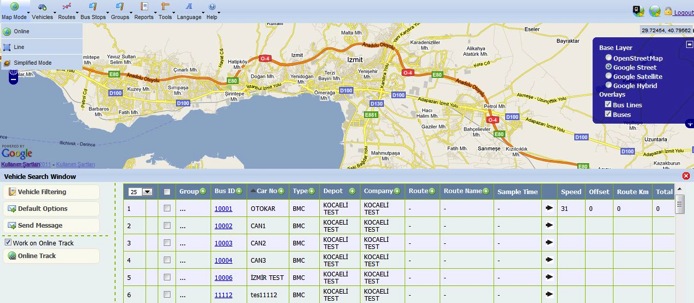
-
The Izmir Metropolitan Transport Co-ordination Centre was established in 2006 for the planning, co-ordination and determination of routes; ESHOT is represented on this body through its General Manager.
-
The company has implemented extensive ITS since 1999, when smart-card ticketing was first introduced. The ticket validators have provided the backbone of the on-bus intelligent network.
-
Vehicle location and voice/data communication capability have been added to provide the platform for a new AVM system. This is based on a centralized Control Centre that manages services on a real-time basis.
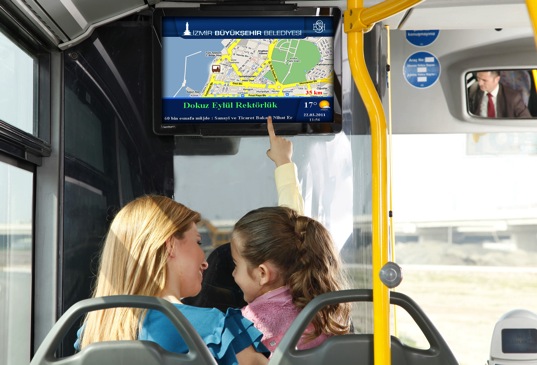
-
The AVL supports real-time passenger information on buses and at bus-stops. The communications capability is also utilized for surveillance.
-
AVL data is also utilized for fuel issue monitoring and bus maintenance scheduling.
-
-
Prince William County
PRTC at Prince William County, USA
-
PRTC is the transit commission for an area of eastern Virginia adjacent to Washington DC.
-
PRTC uses a fleet of 139 buses to provide commuter bus services to Washington (OmniRide) and local flexible bus services in Prince William County and the Manassas area (OmniLink). Service operation is contracted out.
-
OmniLink services are demand-responsive transport (DRT) operated as route deviation (flex-route) for general use including riders with disabilities. Trips are pre-booked from 2 hours to 7 days before travel and about 30 percent of demand responsive trips are standing orders.
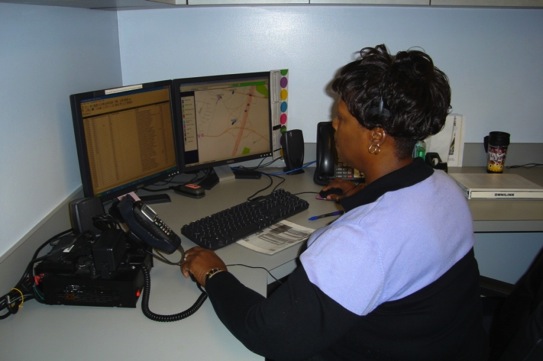
-
First implementation of ITS at PRTC was to support the DRT. It included booking, routing and dispatch software, and in-vehicle data terminals.
-
The ITS evolved with the addition of GPS, improved communications, and new back-office software capacity. Rudimentary GPS tracking was extended to the OmniRide commuter services.
-
A new procurement has been launched in 2011 for significant enhancement of the ITS systems, including CAD/AVL system- and service-wide and installation of new MDTs in all vehicles.
-
Benefits attributed to ITS include the ability to offer DRT with short pre-booking time, better on-time performance, increased efficiency, increased ridership, improved working environment and enhanced data collection.
-
-
Mysore
MCTD of KSRTC, Mysore, India
-
KSRTC is the State Transport Commission for the State of Karnataka, India. It operates about 7,000 buses on intra- and interstate bus services.
-
MCTD is a division of KSRTC, providing urban bus services in the city of Mysore, using a fleet of about 400 buses out of 3 depots and 6 bus stations
-
KSRTC are currently implementing an ITS system at MCTD covering all of the fleet and the services. The order has been placed and the system is scheduled to be fully operational by end-December 2011.
-
The ITS system consists of AVLC based on GPS, GSM/GPRS and real-time passenger information at bus stations, bus stops, and in-vehicle;
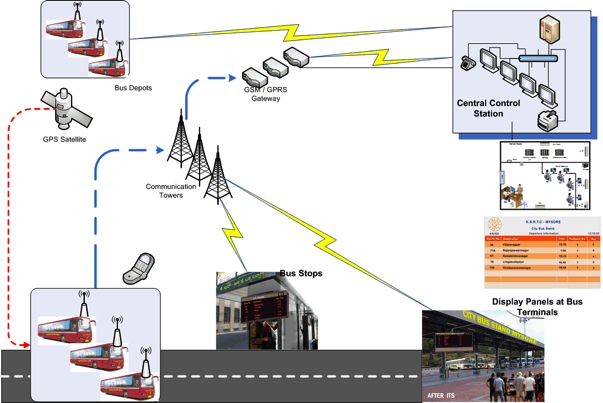
-
A Central Control Station (CCS) is being established at the main bus station, which will manage services along the routes and at outer terminals. Platform dispatchers will be retained at the bus stations.
-
KSRTC are procuring a Project Management Consultant to support the implementation process
-
An extensive Monitoring and Evaluation program is being procured to examine the implementation phase, the system and service performance, and the longer-term impacts. This will assist KSRTC in taking decisions about deployment of ITS elsewhere in their fleet.
-
-
Johannesburg
Rea Vaya, Johannesburg, South Africa
-
Rea Vaya is the BRT network in Johannesburg. Phase 1A is operational, linking the township of Soweto to the CBD. Phase 1B is under construction and expected to be operational during 2012. Rea Vaya is developed by City of Johannesburg.
-
The Rea Vaya network consists of Trunk Routes that operate exclusively on the BRT running way, Complementary routes that operate both on and off the BRT running way, and Feeder Routes that bring passengers to the BRT for transfer.
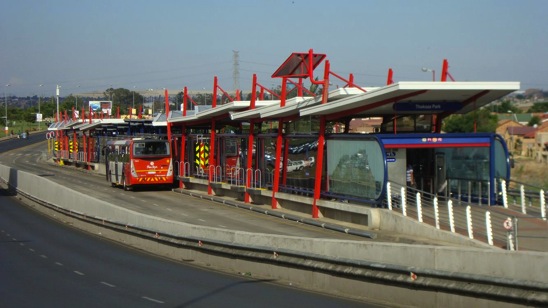
-
A new Bus Operating company (PioTrans) has been formed, whose shareholders are from the minibus taxi owners displaced by the Rea Vaya services. City of Johannesburg has entered a 12-year bus service operating contract with PioTrans, who are paid a per-kilometre fee for the provided services.
-
A comprehensive, integrated ITS program supports Rea Vaya BRT. This consists of GPS-based AVM, operations control centre, traveller information, CCTV for security and station management, scheduling package, traffic signal priority, and fare collection.
-
By end-2011, the AVM, Operations Control Centre, CCTV and scheduling systems are fully operational. The traveller information system and traffic signal priority systems are expected to come on-stream during 2012-3.
-
An Automatic Fare Collection (AFC) system has been procured and is currently under deployment (operational by end-February 2012). The AFC is based on EMV smart cards. Value-loading will take place at stations, vendors and banks.
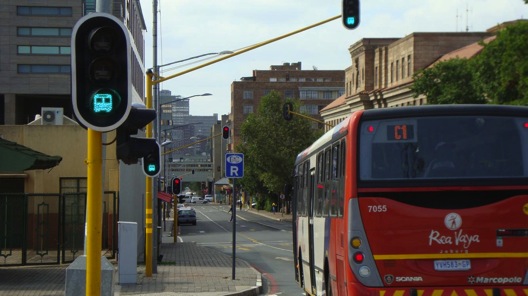
-
The vehicle to control centre communications takes place over the local GSM network, while the stations and their devices use fibre optic cable.
-
-
Sri Lanka
ITS Support to the Private Bus Operator Sector in Sri Lanka
-
The private bus sector in Sri Lanka consists of 19,000 vehicles, which are independently owned, mostly by single-vehicle Owners. There is a very low level of collective organizational or operational capacity.
-
The National Transport Commission (NTC) regulates tariffs and service standards island-wide and regulates permits for inter-provincial bus routes. Raising standards and monitoring compliance are key functions.
-
NTC has already successfully launched the implementation of Electronic Ticket Machines, currently deployed on over half the Sri Lankan bus fleet.
-
NTC achieved this through a combination of mandating their use, preparing specifications, giving type approval to suitable suppliers, and allowing Operators to directly purchase approved models of their choice.
-
NTC has launched an ITS pilot project on inter-provincial bus services, involving about 70 buses. The core application is automatic provision of location data to the NTC Control Centre using GPS and GPRS units.
-
A similar approach to ETMs has been used whereby NTC prepared the technical specifications and invited suppliers to test compliant devices
-
7 suppliers have installed compliant systems. Many have exceeded the baseline requirement and installed additional functionality including fuel monitoring, driver alarms, speeding alerts, in-vehicle image capture
-
Subject to successful pilot phase, NTC intends to make ITS installation mandatory as part of the Permit conditions, and to make permanent their Control Centre for monitoring route and service quality compliance.
-
-
Accra
ITS Support to the Private Bus Operator Sector in Accra, Ghana
-
Urban passenger transport in Ghanaian cities is provided primarily by minibuses (tro-tros) which are individually owned, but are highly organized at route level through Unions. This has provides a stable system which is well understood by the customers. Nonetheless, there are limitations in vehicle and service quality that need to be addressed.
-
Large vehicle service provision is currently limited to the parastatal Metro Mass Transit and some bus companies with low market share.
-
Major sector reform is underway, primarily through the Ghana Urban Transport Project (GUTP). This includes regulatory and institutional development, a BRT corridor from the west of Greater Accra to the CBD, and improved bus routes with some bus priority on other corridors.
-
The local authorities (Assemblies) have taken on the regulatory role and are implementing a new Permit system; hitherto, the sector had been self-regulating. This places new management, monitoring, enforcement, administration and planning requirements on the Assemblies.

-
The tro-tro sector will need to develop Permit compliance capacity, both on the ground and in administrative/reporting terms. It also needs to improve the quality of its vehicles and its services
-
Both the BRT and the Permit Type B Routes will require the formation of new operating entities, new operating methods, and new operational capacity. In addition, a BRT Management Entity will be formed.
-
These are all likely to require ITS for Operations Management, Fare Collection, Passenger Information, and post-event analysis. The pressing timescale may require decisions on ITS in advance of these entities being established and in a position to define their functional requirements.
-
The current baseline for ITS is low, with no ITS and very little computerized systems currently deployed in UPT. There is not currently an active ITS supplier base in Ghana.
-
-
Cebu
ITS Support to Governmental Organisations in Cebu, Philippines
-
Passenger transport in the Philippines is regulated through franchises issued by central government Department of Transport and Communications (DOTC) and its agencies.
-
The primary urban passenger transport mode is the Public Utility Jeepney (PUJ). This is typically an 18-seater converted US Jeep. Outside of Metro Manila this is the sole urban passenger transport mode.
-
The PUJ industry is fragmented consisting of a high percentage of single owner operators. Membership associations exist but are not wholly subscribed to and offer little more than administrative functions.
-
DOTC seeks to achieve increasing efficiency in the provision of passenger transport. Their first focus is on regional services (more often run by larger companies). Thereafter, increasing levels of control and organization would be applied to urban transport first in Metro Manila.
-
During 2011, regional services centred upon Manila are being fitted with GPS to enable operators to locate vehicles operating over long distances.
-
DOTC propose to assist Manila-based urban PUJ owners to fit GPS devices so that PUJs can be monitored. Current plans include cash incentives to owners. It is planned that information will be collected centrally by DOTC and information made available to owner/operators.
-
In the medium term, this information will be used to restructure the PUJ network as route franchises come up for renewal. In the longer term, this information might be linked to an area wide traffic control system.
-
Urban transport fares are cash based. There is no electronic information and basic static information. There is currently no fleet control.
-
The development of a BRT in Cebu has provided an information base from which to work and an ability to explore means by which the passenger transport network can be reorganised to achieve efficiency gains.
-
The Cebu BRT Pre-Feasibility Study (2010) identified the need for ITS solutions for operational management, payment and co-ordination with the City’s urban traffic control system (SCATS). It is estimated that the BRT will be operational by 2014.
-
The World Bank is progressing with a study (expected late-2011) that demonstrates the use of low cost mobile vehicle tracking systems in Cebu. This study will provide transport planners with a low-cost means to collect real time travel information and road condition data. This data can be used to manage road assets, mitigate traffic congestion and manage mass transport fleets.
-














